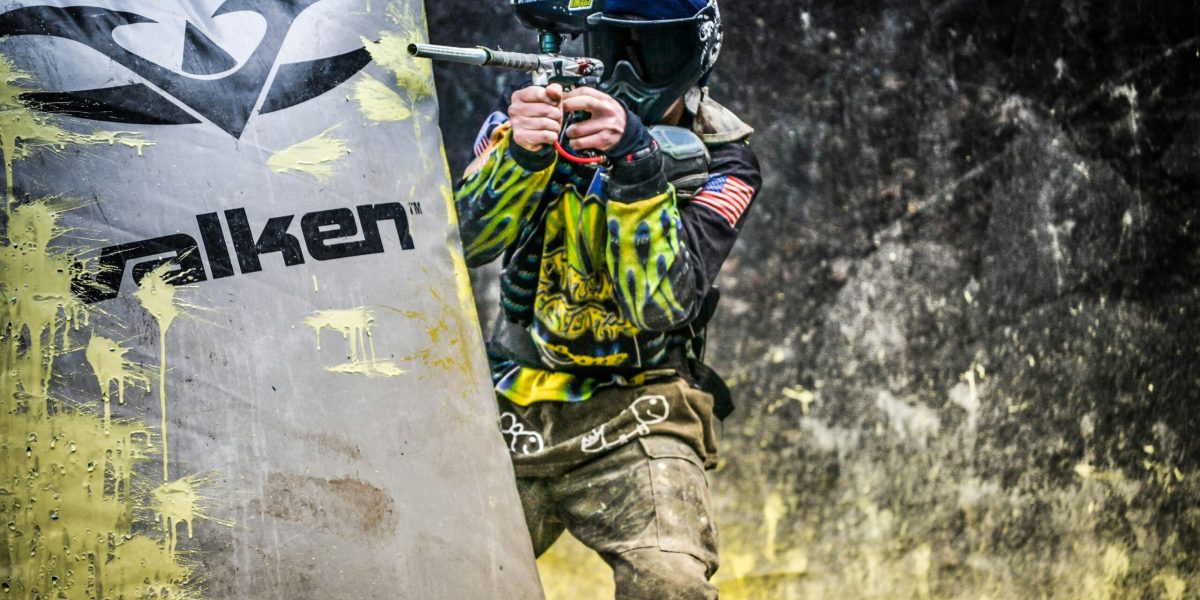Table of contents
Running around aimlessly and hoping for the best might work in laser tag. But in paintball? Not a chance. If you want to survive more than 60 seconds after that whistle blows, you’ll need more than quick reflexes — you’ll need smart, adaptive paintball tactics.
Paintball is chess with bruises. The battlefield favors those who think ahead, work as a unit, and know when to move and when to freeze. Whether you’re playing at an indoor field in Budapest or an outdoor forest zone, these tactical approaches make all the difference between epic glory and walking off the field looking like a Jackson Pollock painting.
Know your field before the first shot
The best players don’t start strategizing when the game begins. They’re already thinking in zones, chokepoints, and cover angles during the walk-through.
Take a moment before the match to memorize:
- Where the high cover is (barrels, walls, bunkers)
- Which areas are bottlenecks
- Where opponents are most likely to rush
Indoor paintball fields are often divided into distinct zones — use that to plan your team’s early positioning. Control the middle, and you control the tempo.
Talk less, signal more
Loud shouting makes you an easy target. Good communication is silent, fast, and efficient. Use hand signals, head nods, or short phrases like “Left!” or “Push!” — your team doesn’t need full sentences, just clarity.
Agree on a few codes pre-game:
- Two taps = move forward
- Raised hand = reload
- Pointing = spotted target
It doesn’t need to be military-level, just consistent.
Flank hard, but only when it matters
Every great paintball tactic article will tell you to flank. But here’s the thing: flanking only works when your opponents are distracted. If you break formation too soon, you’ll end up outnumbered and exposed.
Let your teammates apply front pressure first — fire off some warning shots, force the other side to duck. That’s your moment to break wide and come around the side.
Bonus: indoors, you can often hear footsteps echo. Use this to fake movement and mislead your enemies.
Don’t rush — reposition
Too many players go for the “hero run.” They sprint, they get shot, and their team’s down a body. Instead, use micro-movements: shift between covers, peek without exposing too much, and don’t fire unless you have a real shot.
In Budapest’s indoor arenas, smart players often dominate without firing the most shots — because they simply move better.
Use bait (yes, really)
Here’s a sneaky move: send one player to draw fire while others reposition. They don’t have to get hit — just move loudly, make noise, and pull attention. While the enemy locks onto them, your flanking unit sweeps in for the win.
This works incredibly well in tight, urban-style indoor zones, especially when cover is low and reaction time matters.
Adapt. Always.
The other team read this article too? Good. Let them try. The most effective paintball tactics aren’t fixed — they evolve. If your initial plan fails, switch roles. If your rush didn’t work, fall back and wait them out.
Paintball isn’t about being aggressive. It’s about knowing when to be aggressive.
Bonus tip: paintball tactics for beginners
New to the game? Here’s your best move: find a teammate and stick to them. Don’t run solo, don’t freeze, and don’t hide the whole match. Move with someone experienced, learn from how they shift, when they fire, and when they hold.
You’ll be a better player in 20 minutes just by watching the right people.
FAQ
With smaller groups (2v2, 3v3), controlling key angles and using bait tactics are crucial. Flanking works, but only if one player keeps pressure from the front. Communication is everything.
Only if you know where you’re going and the enemy is pinned. Rushing blind into an open space in an indoor field usually ends with you getting hit. Instead, use speed to reposition, not to blindly attack.
Stay close, cover teammates during reloads, and don’t get tunnel vision. Ask for a simple role (e.g. defender, flank support) and focus on doing that well. Paintball rewards teamwork far more than solo glory.
Yes. Assigning basic roles — like front push, flanker, defender — can make even a group of first-timers act like a unit. It prevents chaos and boosts team confidence from the start.

